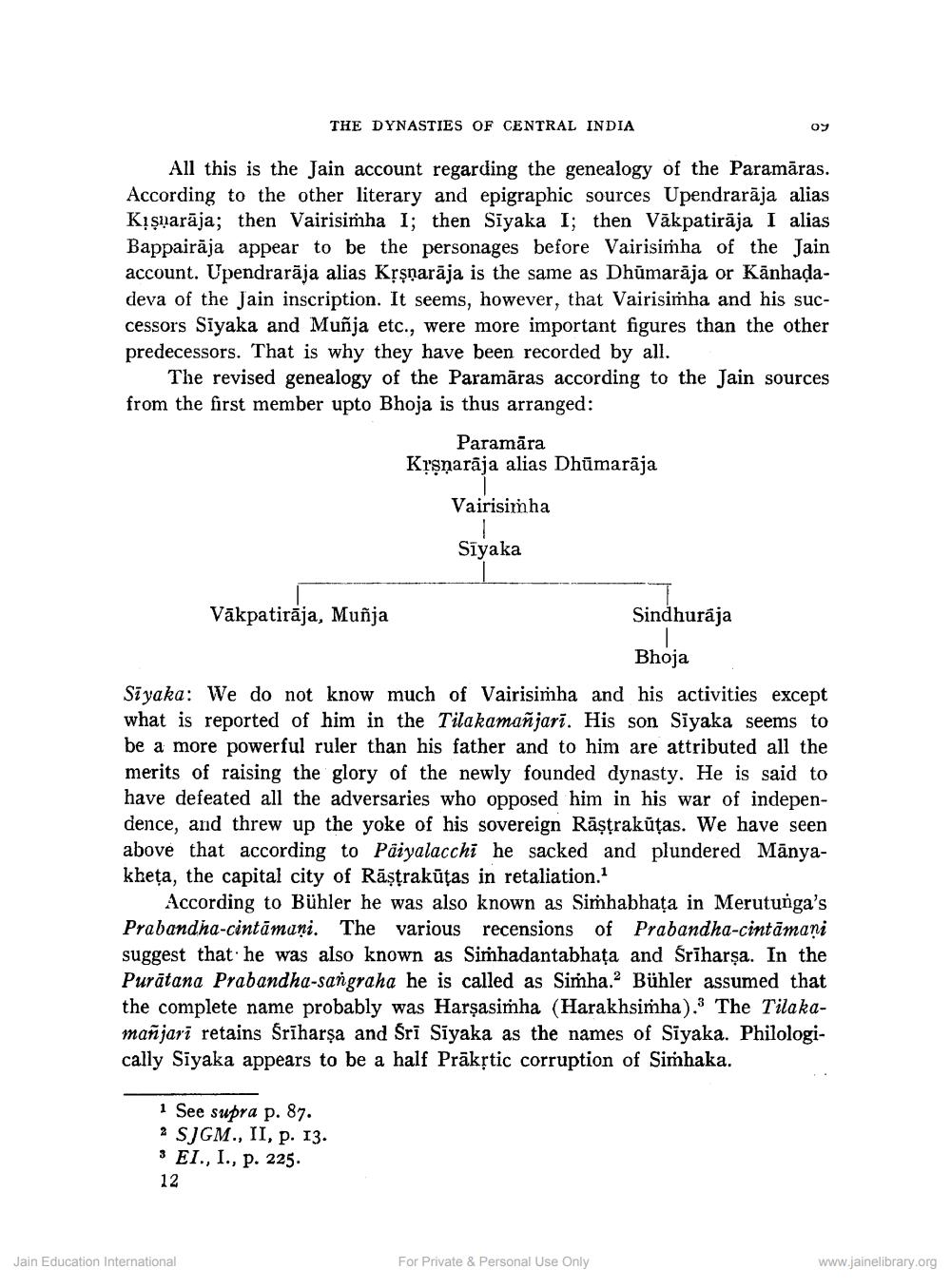________________
THE DYNASTIES OF CENTRAL INDIA
07
All this is the Jain account regarding the genealogy of the Paramāras. According to the other literary and epigraphic sources Upendrarāja alias Kịşəarāja; then Vairisimha l; then Siyaka I; then Vākpatirāja I alias Bappairāja appear to be the personages before Vairisimha of the Jain account. Upendrarāja alias Kļşnarāja is the same as Dhūmarāja or Kānhadadeva of the Jain inscription. It seems, however, that Vairisimha and his successors Siyaka and Muñja etc., were more important figures than the other predecessors. That is why they have been recorded by all.
The revised genealogy of the Paramāras according to the Jain sources from the first member upto Bhoja is thus arranged:
Paramāra Krsnarāja alias Dhūmarāja
Vairisimha
Sīyaka
Vākpatirāja, Muñja
Sindhuraja
Bhoja Siyaka: We do not know much of Vairisimha and his activities except what is reported of him in the Tilakamañjari. His son Siyaka seems to be a more powerful ruler than his father and to him are attributed all the merits of raising the glory of the newly founded dynasty. He is said to have defeated all the adversaries who opposed him in his war of independence, and threw up the yoke of his sovereign Rāştrakūtas. We have seen above that according to Paiyalacchi he sacked and plundered Manyakheța, the capital city of Rāştrakūtas in retaliation.
According to Bühler he was also known as Simhabhata in Merutunga's Prabandha-cintamani. The various recensions of Prabandha-cintāmaņi suggest that he was also known as Simhadantabhata and Śrīharşa. In the Purātana Prabandha-sangraha he is called as Siṁha.? Bühler assumed that the complete name probably was Harşasimha (Harakhsimha). The Tilakamañjari retains Sriharşa and Sri Siyaka as the names of Siyaka. Philologically Siyaka appears to be a half Prākştic corruption of Simhaka.
1 See supra p. 87. 2 SJGM., II, p. 13. 3 EI., I., p. 225. 12
Jain Education International
For Private & Personal Use Only
www.jainelibrary.org




